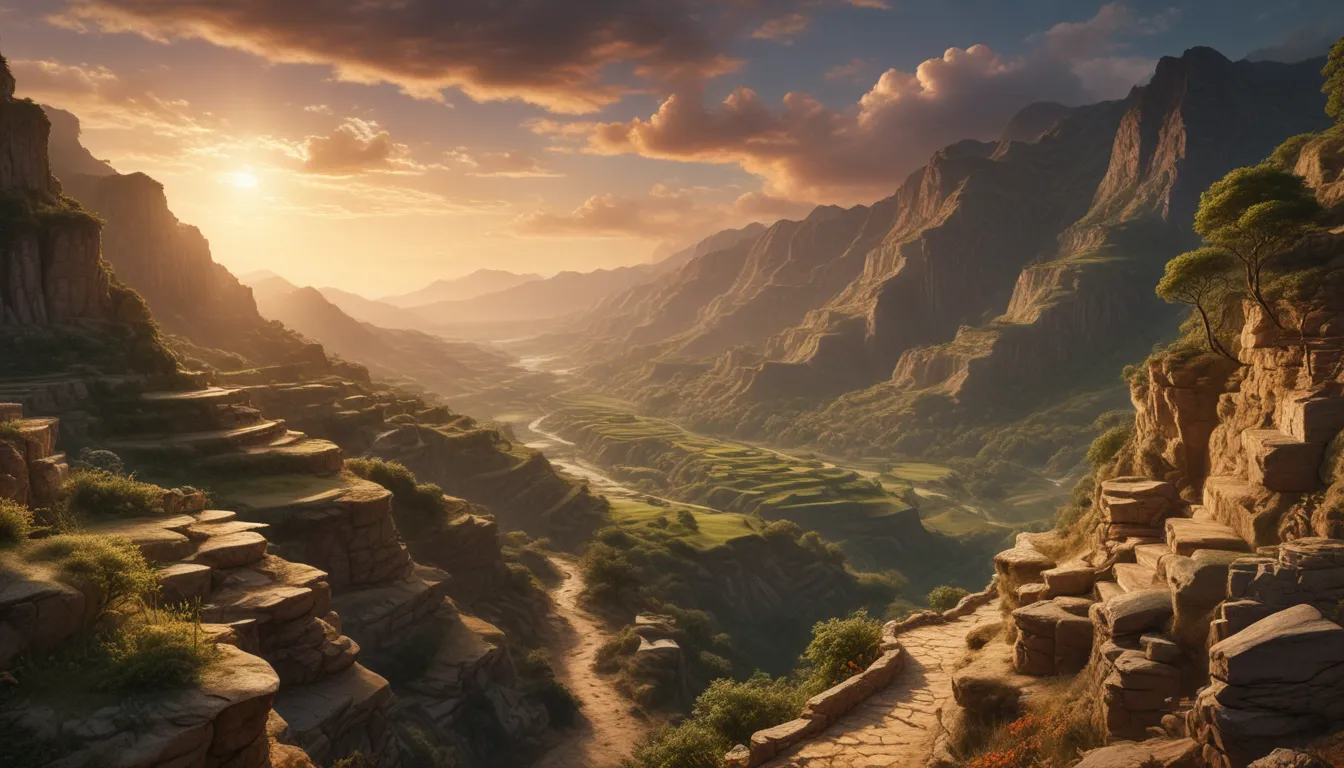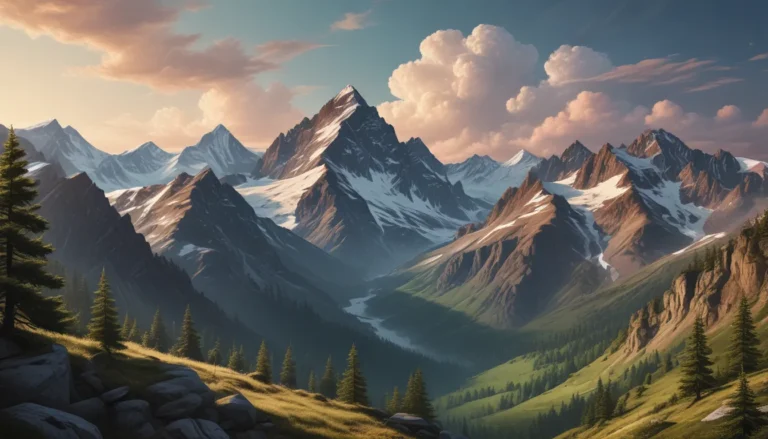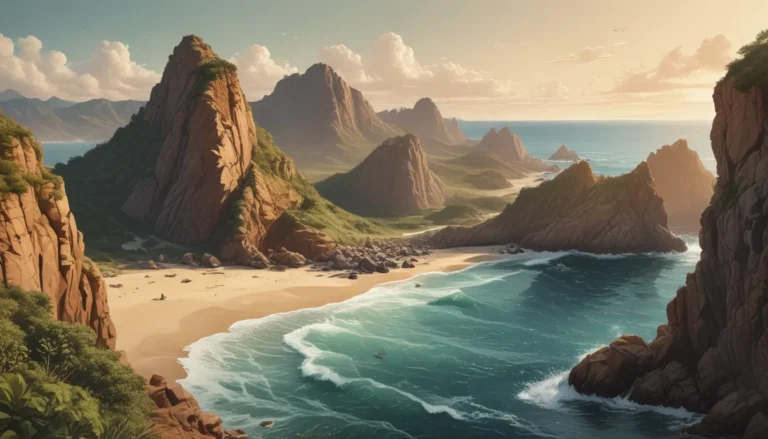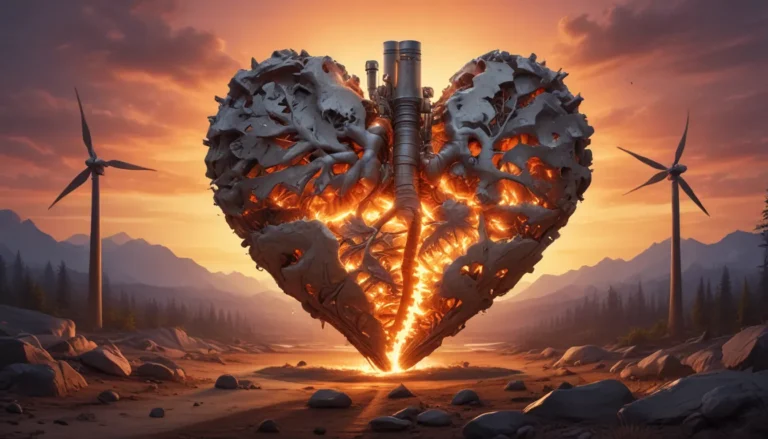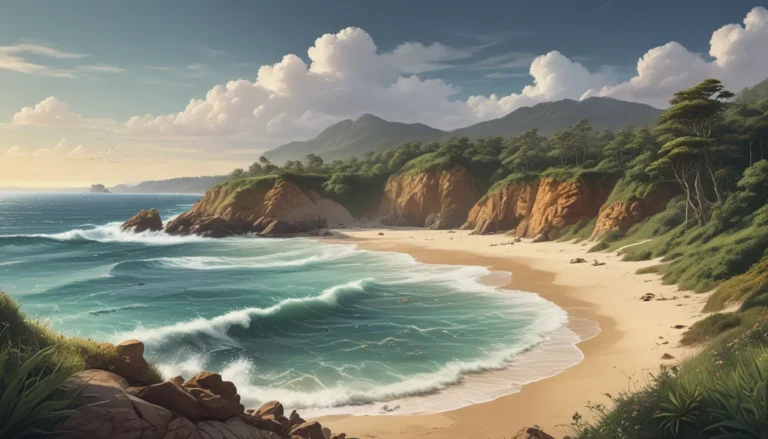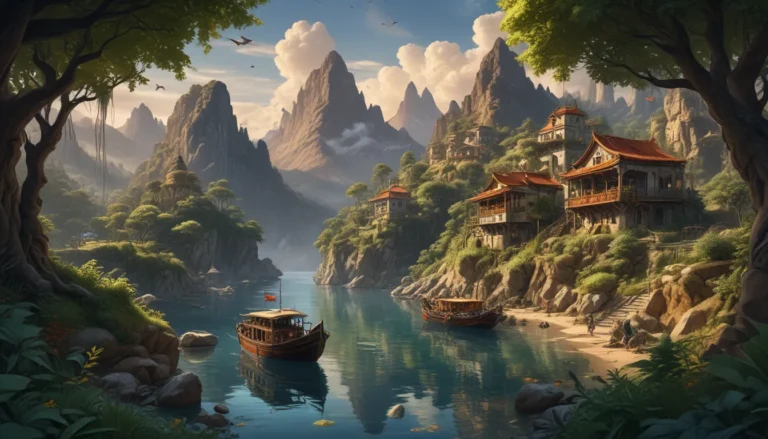A Note About Images: The images used in our articles are for illustration purposes only and may not exactly match the content. They are meant to engage readers, but the text should be relied upon for accurate information.
In the realm of geology, terraces stand as enigmatic landforms that captivate the attention of scientists and geologists worldwide. These unique geological formations, characterized by flat, elevated surfaces, offer valuable insights into Earth’s history, past climates, tectonic activities, and erosion processes. Join us on an exploration of 18 intriguing facts about terraces, shedding light on their formation, characteristics, and significance.
The Mystique of Terraces
Terraces, shaped by natural processes like erosion and sediment deposition, provide a window into the geological evolution of our planet. Not only are terraces aesthetically pleasing, but they also play crucial roles in agriculture, conservation, and scientific research. By unraveling the mysteries behind terraces, we can uncover the stories embedded within these geological marvels.
Terrace Formation: Unveiling the Creation Process
Terraces come into existence through a myriad of natural processes, including erosion, weathering, and sediment deposition. These cumulative forces shape the landscape, giving rise to the distinctive terraced formations that intrigue us.
Discovering the Diverse Types of Terraces
Various types of terraces exist, each with its unique characteristics and formation mechanisms. From river terraces formed by eroding floodplains to fault-line terraces created by tectonic activities, these landforms showcase the complexity of nature’s handiwork.
Exploring the World of River Terraces
River terraces, born from the gradual erosion of a river’s floodplain, offer intriguing insights into the evolution of river systems. The elevated landforms left behind by receding waters hold clues to the dynamic nature of Earth’s landscapes.
Unveiling the Secrets of Marine Terraces
The uplift of land or sea level changes give rise to marine terraces, former shorelines elevated above current sea levels. These distinct landforms bear witness to past geological events that have shaped our coastlines.
Decoding the Story of Glacial Terraces
Glacial terraces, formed by the deposition of glacial sediments during glacier retreats, present step-like features that reveal the icy grip of ancient glaciers. Their formation hints at a frozen past marked by monumental geological forces.
Delving Into the World of Fault-Line Terraces
Tectonic activities along fault lines create fault-line terraces, showcasing the Earth’s dynamic nature. The displacement caused by these activities results in the creation of terraced landforms that highlight the planet’s ever-changing facade.
Unraveling the Age of Terraces
Determining the age of terraces involves various methods, such as radiometric dating, stratigraphy, and fossil analysis. By unraveling the timeline of terrace formation, researchers gain valuable insights into past environmental conditions and geological events.
Embracing the Importance of Terraces
Terraces serve as invaluable resources for understanding Earth’s history, environmental changes, and resource availability. Scientists rely on these geological features to piece together the puzzle of our planet’s past and present.
Harnessing Terrace Agriculture for Sustainable Growth
Throughout history, farmers have utilized terraces to create arable lands on steep terrain, enabling agriculture in challenging landscapes. These terraced fields not only sustain crops but also contribute to soil conservation and water management.
Championing Terrace Conservation for Environmental Stability
Preserving terraced landscapes is crucial for maintaining soil stability, protecting ecosystems, and preventing erosion. By implementing conservation efforts, we safeguard these unique environments for future generations.
Global Wonders: Terraced Landforms Across Continents
Terraces can be found in diverse regions worldwide, from the iconic rice terraces of Asia to the ancient terraces of Machu Picchu in Peru. Each terraced landscape showcases the ingenuity of human adaptation to challenging terrains.
Navigating Terrace Formation Challenges
Geological factors like climate, tectonic activities, and underlying rock composition influence terrace formation. Understanding these challenges sheds light on the intricate processes that shape terraced landscapes.
Embracing the Dynamics of Terrace Erosion
Natural forces such as wind, water, and gravity contribute to terrace erosion over time. The reshaping of terraced landforms underscores the ever-changing nature of Earth’s surface and the continuous evolution of landscapes.
Unveiling the World of Terrace Research and Studies
Scientists and geologists delve into extensive research on terraces to unravel landscape evolution, geological processes, and environmental changes. Through meticulous studies, they deepen our understanding of the forces that shape terraced terrains.
Illuminating the Geological Significance of Terraces
Terraces serve as vital clues in studying geological phenomena, offering evidence of past climate change, sea-level fluctuations, and tectonic activities. Their geological significance paints a vivid picture of Earth’s dynamic history.
Glimpsing Into the Mysteries of Terrace Formation on Mars
Terraced landforms on Mars mirror similar geological processes observed on Earth, hinting at the planet’s mysterious past. The discovery of terraces on Mars showcases the universality of geological phenomena across celestial bodies.
Confronting Terrace Preservation Challenges
Urbanization, deforestation, and land development pose significant threats to terrace preservation. By advocating for conservation efforts and sustainable land-use practices, we strive to protect these unique landscapes for future generations.
Embracing Terrace Tourism: A Journey of Discovery
Terraced landscapes have become popular tourist destinations, attracting visitors with their scenic beauty, cultural significance, and geological wonders. Exploring these terraced wonders offers a glimpse into the rich tapestry of Earth’s diverse landscapes.
Demystifying the Geological Wonders of Terraces
In conclusion, the study of terraces unveils a treasure trove of geological wonders waiting to be explored. From their intricate formation processes to their role in shaping landscapes, terraces offer a gateway to unraveling Earth’s history. By delving into the mysteries of terraces, scientists and geologists continue to unearth the secrets hidden within these geological marvels, enriching our understanding of the planet’s enigmatic past.
FAQs: Unveiling the Secrets of Terraces
-
What is a terrace in geology?
A terrace in geology refers to a flat or gently sloping landform created by erosion, deposition, or tectonic activity, typically found alongside rivers, coastlines, or mountains. -
How are terraces formed?
Terraces are shaped by erosion and deposition processes, where natural forces gradually sculpt the landscape to create stepped or sloping landforms known as terraces. -
What is the role of terraces in shaping landscapes?
Terraces play a vital role in shaping landscapes by influencing water flow, preventing erosion, and creating fertile soil conducive to diverse ecosystems. -
Can terraces provide insights into Earth’s history?
Yes, terraces hold vital historical information that offers insights into past climate conditions, erosion patterns, and geological transformations over time. -
Are terraces only found on Earth?
While terraces primarily exist on Earth, similar landforms have been discovered on other celestial bodies, such as Mars, indicating shared geological processes across different planets.
Terraced landscapes beckon explorers to uncover their enigmatic secrets and marvel at the geological wonders they behold. As we continue to delve into the mysteries of terraces, we unveil a tapestry of Earth’s history and the intricate forces that have shaped our planet over time. Journey with us into the realm of terraces, where every step reveals a new facet of our planet’s rich geological heritage.
